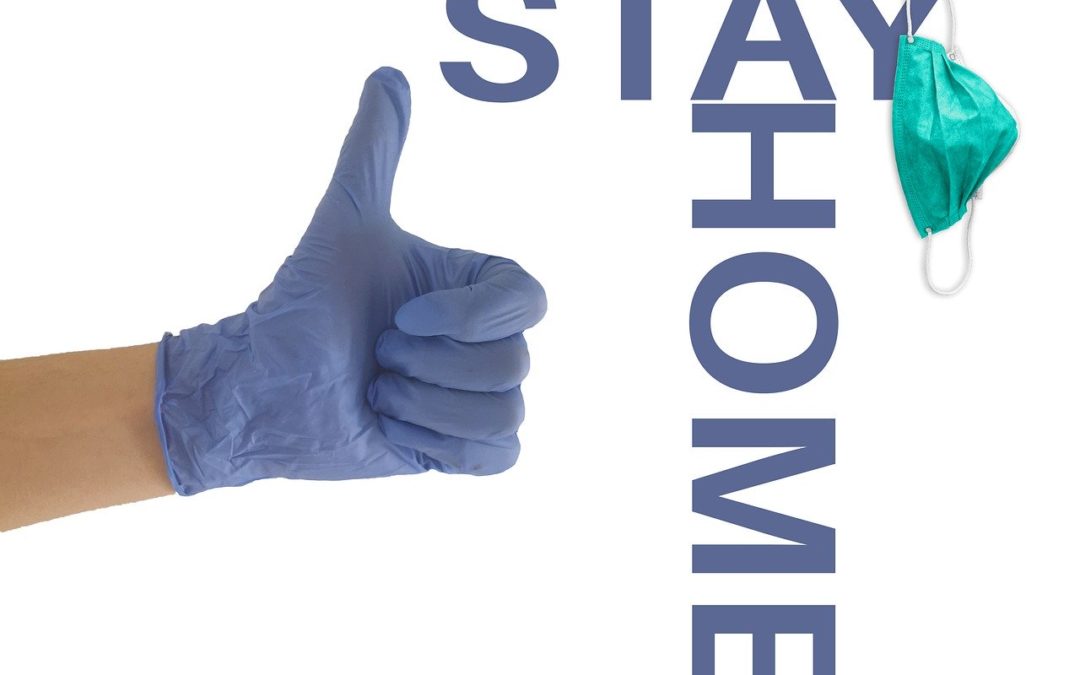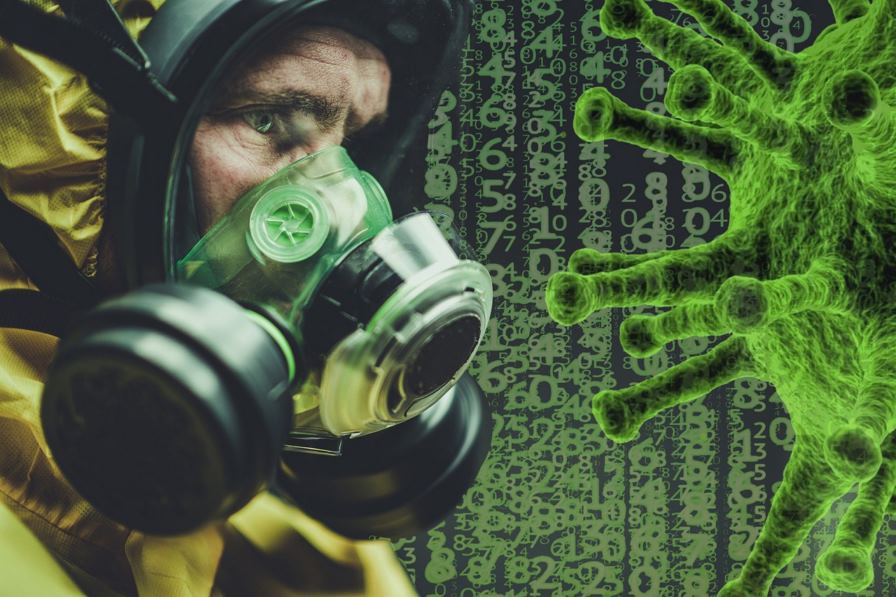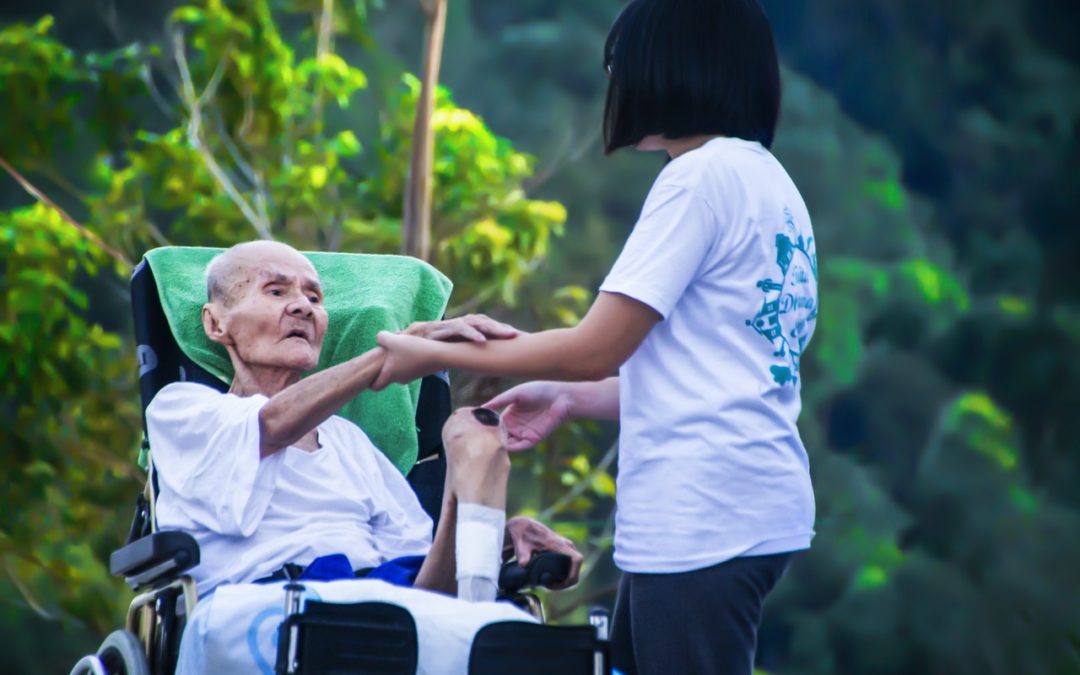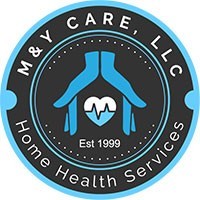
by M | Apr 30, 2020 | News |
Ruth Caballero paused outside an unfamiliar apartment door, preparing to meet her new patient.
She covered the knob with a plastic bag. Put on a surgical gown, then a heavy-duty N95 mask, a lighter surgical mask on top. Cap, face shield, shoe covers. Hand sanitizer between each step of the process. Finally, the nurse donned two sets of gloves and knocked on the door with her elbow, ready to care for her first coronavirus patient.
After about three weeks in a hospital, the man was home in his New York apartment but still so weak that sitting up in bed took some persuading.
“You made it out of the hospital, so you are a miracle,” Caballero told him. “Now let’s keep you out of the hospital.”
Home health care is becoming a new front in the national fight against COVID-19 as some patients come back from hospitals and others strive to stay out of them.
Home care nurses, aides and attendants — who normally help an estimated 12 million Americans with everything from bathing to IV medications — are now taking on the difficult and potentially dangerous task of caring for coronavirus patients.
While Americans are being told to keep to themselves, home health providers and their clients still largely have to engage in person, often intimately. Many agencies are ramping up phone or video visits but can’t always get paid for them, and even the smartest phone can’t physically dress a wound or get someone to the bathroom.
Like their colleagues in hospitals and nursing homes, home care workers have faced a scarcity of protective equipment, but with a lower public profile. Some agencies have scoured for masks at nail salons, auto body shops and tattoo parlors, said William Dombi, president of the National Association for Home Care and Hospice, an industry group.
The crisis is testing the industry, but it’s also a moment of pride for workers who have often felt under-recognized.
“It is a challenge to keep the business operational, but it’s an opportunity,” Dombi said. “We’re getting a chance to establish what can be done.”
Coronavirus care at home has expanded rapidly in the last few weeks. At least some agencies in most states are now taking COVID-19 patients referred after hospitalization or nursing home care or as an alternative to them, Dombi said.
Still, some patients have struggled to get care. After being diagnosed with coronavirus-related pneumonia late last month, Penny Wittbrodt contacted multiple agencies around her home in Winchester, Kentucky. None was then accepting COVID-19 patients, she said, though her doctor was able to arrange home oxygen. Wittbrodt, who has asthma and a history of respiratory hospitalizations, is still not well, though she’s had some relief at times.
A retired home health nurse, Wittbrodt feels such care is especially valuable in the pandemic.
“Home health would expose far less people to COVID than hospitalization,” she said.
New York-based Americare Inc. has taken about 100 COVID-19 patients released from hospitals, and over 200 of the agency’s other patients also have tested positive or shown symptoms, VP Bridget Gallagher said.
Every corporate staffer including the CEO is calling protective gear suppliers, but the agency still counts its stock of N95 masks every day.
“We’re doing what we can, but I have to be honest: None of it feels like enough,” said Gallagher, who’s also on the board of the Home Care Association of New York State.
For many agencies, chronic staff shortages are amplified by absences due to illness or quarantine. And workers are grappling with patients’ fears while reckoning with their own risk.
The surgical mask and gloves that Washington home health aide Adassa Clarke now wears rattle her patient, who has Alzheimer’s disease and relies on a wheelchair. The patient doesn’t have COVID-19 but can’t retain what she’s been told about an illness going around.
“What’s going on? Do I have a germ? Am I dying?” she asks, according to Clarke. Sometimes, the patient breaks into tears.
At 65, Clarke herself is in an age group at higher risk of severe cases of COVID-19, and she’s trying to stay home as much as she can.
But patients “come first,” said Clarke, a certified nursing assistant.
“I just feel like the more I help, the more I keep going,” she said.
A home health nurse with Chicago-area patients with COVID-19, Vanessa Pepino-Adraneda is extra-vigilant about protective gear and other precautions. Pepino-Adraneda also girds herself by focusing on caring for her patients and allowing herself moments of sadness, frustration or exhaustion.
By The Associated Press | April 27, 2020
Source: The New York Times

by M | Apr 26, 2020 | News |
Faced with a severe shortage of hospital beds in the COVID-19 pandemic, governors and mayors have had to convert public spaces, such as convention centers, into infirmaries. Now some people are suggesting that more permanent hospital beds be built, in anticipation of future crises.
While these reactions are understandable, they ignore non-hospital-based systems that can significantly increase hospital capacity more quickly and efficiently. One such solution is “hospital at home,” a well-studied model of care that transforms the patient’s own bed into a hospital bed.
Most hospitalizations for patients with mild or moderate illness require a set of initial tests, a daily evaluation from a doctor, intravenous medication on occasion and check-ins from a nurse a few times a day. All of this can be provided in a patient’s home with current technology. Some hospitals have carried this out with virtual physician visits, remote measuring of vital signs and 24/7 central monitoring stations.
The hospital-at-home model may be particularly useful for coronavirus patients, who would benefit from medical supervision, but may not need to be admitted to the hospital. Many COVID-19 patients are hospitalized between 10-13 days. The hospital-at-home model would allow shorter length of stays for those patients who are on the road to recovery, and thus free up beds for new patients.
Not surprisingly, clinicians in countries overwhelmed with COVID-19 patients have recognized the need for “community-based care” deployed in the bedroom as opposed to hospital-focused care.
The home-based approach is not new. It has been used effectively in hospitals such as Presbyterian Healthcare Services in Albuquerque, N.M., Mount Sinai Health System in New York City, Johns Hopkins Hospital in Baltimore and the Advocate Christ Medical Center near Chicago. Outside the U.S., Canada, Australia and Israel have well-established programs.
In those places, the hospital-at-home team works with the patient and family caregivers to ensure that the home environment is safe and that someone is available to be with the patient, if needed. If family caregivers do not have the resources, home health aides could be deployed or a social worker could help the family and patient find short-term support if they are interested in the program.
A one-year evaluation of the hospital-at-home program in Victoria, Australia, found the program accounted for 5% of all bed-days, equivalent to a 500-bed hospital. Conditions commonly treated include dehydration, community-acquired pneumonia, skin infection, or exacerbations of chronic obstructive pulmonary disease or congestive heart failure.
Patients under home-based care can avoid hospitalization risks, such as falls, delirium and, during the coronavirus pandemic, infection. Surveys have also found that these patients are generally more satisfied with physician communication, have fewer readmissions to the hospital and have better clinical outcomes.
Beyond these benefits, hospital-at-home programs can offer significant savings. If adopted fully, this approach could save 19% on each patient served compared with patients admitted to a hospital. Yet most insurance plans and the federal government are only willing to pay for this level of care in the traditional and expensive hospital setting.
Existing solutions to pay for acute care at home could be adopted immediately. In the meantime, states can support this model by providing equipment to hospitals to assist with remote care and allocating part of their coronavirus emergency health team to providing care in patients’ homes.
Even after the coronavirus crisis abates, we will need health care systems that can expand easily with demand and, just as important, contract when episodic demand subsides. As the aging population grows, the annual number of hospitalizations is projected to increase 67% by 2050.
Decades of research and experience have shown that building more hospital beds is not the answer. Unnecessary hospital capacity has only added unnecessary expense to the nation’s bloated health care budget without improving health outcomes. Since the 1970s, state regulations have worked to reduce the number of beds by about 10% to curb ballooning health care costs.
Adopting the hospital-at-home model could help respond to the short-term health crisis and the long-term cost crisis. Better care for many patients may lie not in more hospital beds, but in their own bedrooms.
By Sirina Keesara and Nicholas Bott, Published 7:00 pm CDT, Thursday, April 23, 2020
Source: mySA

by M | Apr 24, 2020 | News |
Home health care aides who are being called upon to care for coronavirus patients by relatives who cannot safely do so themselves say a shortage of personal protective equipment (PPE) is putting them at risk. One natural survey found nearly half of the home health care agencies are experiencing a shortage of necessary equipment.
“Forty-five percent have less than 10 days of PPE, but 42 percent are serving COVID-19 patients,” Bill Dombi, president of the National Association for Home Care & Hospice, told Fox News. “The best remark that I got with somebody who said we don’t have the necessary face shields, so we’re cutting open soda bottles and using those as makeshift face shields.”
Dombi said many are resorting to a “beg and borrow” approach, appealing to nail salons, tattoo parlors, and construction sites in order to access masks or makeshift gowns.
Dombi also said the industry is seeing a shift in the patient population, with an uptick in COVID-19 positive patients requiring care and a downward trend in those who would typically need assistance after elective surgeries.
“We’re also seeing a growing number who are refusing care because of the fear of having the virus transmitted from the caregiver to them,” he said.
But the caregivers, he said, are not letting shortages stop them from providing critical care patients require. He also added that companies are reaching out on a local basis to attempt to acquire PPE, but that most find themselves “either at the end of the line or close to the end of the line, and not having any allocation of PPE from those emergency distributors that were out there serving through the FEMA allocation.”
“I am on a daily basis receiving dozens and dozens of messages indicating the frustration with accessing PPE and that the workers are getting scared because of that,” he said.
DOGS CAN SNIFF OUT CORONAVIRUS CASES AT RATE OF 750 CASES PER HOUR
Dombi said turning to a telehealth model could lessen the demand for PPE but that not every company is financially equipped to offer such services.
At least one company has seen caregivers opt out of work in the interest of safety, but the owner said it has to do with overall concerns about the virus and not much to do with PPE.
“Many, many caregivers are not interested in working at all at this time because they are afraid of their own health issues,” Beth Sholom, owner of Right at Home in central New Jersey, told Fox News. “They’re afraid to bring [COVID-19] back into their home and they just don’t know enough about the virus. None of us do. So they are choosing not to work. Although, we have plenty of caregivers that are choosing to work and they are amazing, amazing — truly heroes.”
Sholom said she expects those who are opting out of work to resume their duties as more information about the virus becomes available. She added that the company has been hiring to make up for any kind of shortage.
Some home care companies are establishing specific COVID-19 positive units that are dispatched to take care of patients who contract the virus. Brooke Scavino, a registered nurse with the Visiting Nurse Association Health Group, told Fox News that she and her partner work in tandem to safely care for a patient.
“I have full protective gear and I go into the person’s home, I ask everybody to stay six feet away from me,” she said.
Her partner remains in the car on the phone and when she begins the sanitizing and cleaning process, meets her at the door where she takes her protective gear off and puts it in the bag.
Scavino said that while she does see patients in their home, she’s also helping to care for patients in group home settings and assisted living facilities.
“I had a patient with Down syndrome and his father had been his caregiver for the past 30 years, and there’s no other family, and the father died of COVID,” she said. “Then the son had COVID and he was in the hospital for a month and now he’s in a new group home he’s never been in. He would barely let me go near him today. That one was really sad because now he’s a ward of the state. And it was just like, ‘OK, he needs us,’ so we are there for him.”
Scavino said that while the work has been demanding, it’s been the “most rewarding time for me in my career.”
By Tara Prindiville | Fox News
Fox News’ Alexandria Hein contributed to this report.

by M | Apr 19, 2020 | News |
Providers struggle with workforce shortages, search for protective gear, unexpected costs and uncertain revenues.
Like hospitals and nursing homes, home health care involves significant levels of hands-on assistance for some of New Jersey’s most vulnerable residents, whether it’s helping an elderly individual bathe or adjusting the breathing tube on a 6-month-old infant.
And like the challenges other health care providers face during this coronavirus epidemic, home care agencies are now struggling to balance the sudden need for more protective gear, workforce shortages, unexpected costs and uncertain revenues. But in caring for people in private homes — instead of institutions — many of these struggles remain out of public view.
“This is very intimate (care) — you can’t do telehealth,” said Todd Thiede, CFO of Preferred Home Health, a multistate agency that provides private nursing care for severely disabled individuals in New Jersey. “It’s not possible for our nurses” to practice social distancing, he said. “We have to be face to face, hands-on.”
Preferred is among the roughly 1,200 agencies licensed in New Jersey to offer certain medical care, assistance with bathing, dressing and daily needs, physical therapy, social work or hospice services in private homes; some companies dispatch home health aides, licensed individuals who assist with daily nonmedical needs, while others focus on private duty nursing, which requires licensed nursing staff. Some agencies are paid through Medicaid, which covers disabled individuals, while others collect from Medicare, which funds some home health services for elderly individuals who are recovering from hospitalization; most also take private insurance.
Freeing up hospital beds
Home care plays a particularly important role during the coronavirus pandemic by helping those elderly individuals and others who have been hospitalized to recover at home — potentially freeing up a bed and reducing the potential for that person to be readmitted if they develop an infection in a wound, for example, or their illness reemerges. Private nurses also are essential to keeping severely disabled children and teens from developing complications that require hospitalization.
“We feel a sense of commitment and pride to be part of the solution,” said Dr. Steven Landers, a geriatric medicine specialist who heads the VNA Health Group, which works in New Jersey, Ohio and Florida.
New Jersey is currently seeking to maximize hospital bed capacity in response to the COVID-19 crisis, reopening or repurposing space at existing acute-care facilities and setting up three regional field hospitals, two of which are now accepting patients. More than 71,000 residents are now diagnosed with the virus, including nearly 3,200 who have died.
Staffing shortages, low pay, health concerns
The struggle for nurses, respiratory therapists and other clinical staff has become a chronic problem for hospitals and long-term care facilities in the Garden State, prompting the state to draft volunteers, contract with staffing agencies and enlist retired professionals. Some home health agencies — part of an industry historically plagued by workforce shortages — are also growing concerned.
While private nurses — who care for approximately 5,000 individuals in New Jersey — may be paid more than other home care service providers, the home health aides who assist with daily needs earn up to $25,000 annually, on average, according to a recent study by the Rutgers Center for Women and Work. The workforce of 36,000 is almost entirely female; half are immigrants and more than two-thirds are nonwhite.
“With all of the attention rightly focused on our incredible doctors, nurses, and first responders, it’s easy to forget about the thousands of home health aides who are caring for vulnerable New Jerseyans every day,” said Debra Lancaster, the center’s executive director. “We’ve seen a growing demand for their services over the last 20 years. Yet, they remain among the lowest-paid workers in our state.”
These demographics mean home health aides are highly likely to also be caring for children or elderly relatives at home — a task that has grown more complicated as schools and senior center programs have closed. And they are disproportionately vulnerable to COVID-19 infection and death, which impacts minorities at higher rates. As a result, agencies have seen staff numbers decline in recent weeks.
The staffing situation “was already fragile, but this has pushed it to the brink,” Thiede said. And while some health care providers can train a volunteer or visiting nurse quickly — and state officials have waived certain requirements to speed the process — that’s more difficult when the care involves children who are extremely medically compromised and likely nonverbal, he explained.
“The retired nurse from Florida doesn’t really help us much,” Thiede added. “There’s no place where I can put you tomorrow.”
‘A vulnerable population’
Nancy Fitterer, president and CEO of the Home Care and Hospice Association of NJ, agreed; the association represents dozens of providers offering home care and private nursing. “This is a very vulnerable population,” she said, particularly those who require private duty care. “These are nurses who take care of the most fragile children.”
Fitterer said some agencies have increased salaries by several dollars an hour, boosted overtime wages or — to keep them safe and on the job — paid car service fare for workers who previously took public transportation. Staff shortages “haven’t been extreme yet,” she said last week, “but it could get there if more (employees) get sick.”
The VNA’s Landers said his agency, which serves many people returning home from hospitals, has been able to shift planning and scheduling functions online and now provides some visits virtually, when possible. The company has ramped up infection control training and created an electronic health check portal for staff to report any COVID-19 symptoms or exposure.
“We’re not by any means out of the woods,” he said earlier this month, “and we have a major, major challenge ahead of us.”
Demand has slightly declined
The saving grace, some agencies said, is the fact that demand for home care services has also declined slightly under the epidemic. In some cases, families are willing to take on greater caregiving themselves, or are concerned about visitors transmitting the virus. Others can no longer afford additional services, even if portions of the bill are covered by insurance.
“It’s a double-edged sword for them,” Fitterer said. Some agencies have lost nearly 30% of their business, she noted.
Less business means lower revenue and at a time when there are new, unexpected expenses to cover, providers said. These include wage increases, travel costs and payments for personal protective equipment, or PPE — the gowns, masks and gloves needed to protect health care workers against the virus — which is costing some agencies as much as five times what they normally pay.
“We’ve gone through some unusual routes (to purchase PPE) and we are certainly paying a premium,” Thiede, with Preferred, said.
Fitterer praised the state Department of Human Services, which oversees much of the state’s home care work, and the Department of Health for providing extensive guidance in how to respond to the epidemic and being available to provider groups. She said agencies paid under Medicaid have also sought to increase reimbursements by 25% under the crisis, a conversation she said is now going on with DHS and the insurance companies managing these plans.
DHS did not comment directly on this request, but underscored the state’s appreciation for the work being done by these groups. “Human Services is incredibly grateful to the dedicated private duty nurses and home care aides who are working hard in the midst of this crisis to care for New Jersey residents,” said DHS spokesman Tom Hester Jr. “We greatly value their work and commitment, and in the face of dramatic budget challenges in the state will continue to work to identify opportunities to best support this vital work.”
Lilo H. Stainton | April 16, 2020
Source: NJ SPOTLIGHT

by M | Apr 17, 2020 | News |
The Service Employees International Union (SEIU) held a virtual press conference on Wednesday to make a series of demands on behalf of home care workers. The press conference also allowed a few workers to directly share their personal hardships during the public health crisis.
As of April 9, over 9,000 health care workers had contracted the COVID-19 virus in the United States, according to the Centers for Disease Control and Prevention (CDC). The actual number is undoubtedly much higher — and it’s likely impossible to know how many in-home care workers have been affected due to testing challenges and an overall lack of support for non-facility-based caregivers.
The SEIU represents 2 million workers in health care, the public sector and property services across the country. On the call, home care workers shared emotional testimonies, detailing workplace difficulties that included a severe lack of personal protective equipment (PPE), no sick leave and low wages, among other undesirable conditions.
“I work in home care because it’s a gift from God. I have to do this job because someone needs me to care for them,” a Memphis, Tennessee home care worker said. “But despite the crucial role we have in keeping our clients safe from the coronavirus, this is the most inhumane, unsafe and unappreciated line of work.”
More so than attacking their provider organizations, the home care workers spoke out to advocate for additional governmental support.
During the virtual event, one worker said that her colleagues had been making protective masks out of paper towels. Another said she had been making her own hand sanitizer with a mixture of ingredients she bought at the store — paying for supplies herself.
“We have no voice, especially during this crisis,” the worker said. “I have no paid sick time days through the home care agency or my other job. My agency has tried to provide the resources for us as far as PPE, but they can’t seem to obtain any. We have no shields, no gowns, no sanitizers — we don’t even have masks.”
No paid sick leave
In addition to personal hardships, the virtual press conference also highlighted general challenges facing all in-home care providers, including clients refusing visits.
For example, one home care worker described a time when she went into work and her patient told her she shouldn’t be there. She was sick, and the patient could tell.
Even so, the worker felt obligated to go work to take care of her client — and to make enough money to survive.
Along those lines, one of SEIU’s demands was removing the exemption that the Department of Labor (DOL) placed on home care workers, which keeps them from receiving additional workplace benefits included in the Families First Coronavirus Response Act (FFCRA).
Broadly, the FFCRA grants paid family and sick leave for workers during the coronavirus crisis in the U.S.
Home care industry advocates had vied for agencies that employed either home care or home health workers to be exempt from the act’s benefits in order to ensure that they had enough workers to deploy on a day-to-day basis. If the DOL hadn’t included those workers, there was also concern that smaller, cash-strapped agencies would go under if forced to pay for extra leave.
But that exception backfired for some front-line workers, according to SEIU.
“It’s hard. I wish that they would give us paid sick days, but we don’t get them. We get no time off,” one worker from Richmond, Virginia, said. “And it’s a choice you have to make to live and survive. … We get sick just like everyone else. And home care workers, we take care of seniors and others with disabilities, and we are in high demand, but yet you don’t want to give us anything for what we do? I don’t understand why they forget about us.”
Although they may have an exemption under FFCRA, many home-based care providers have voluntarily implemented comprehensive paid sick leave and emergency leave policies. Others have also launched initiatives that provide bonus pay to workers caring for COVID-19 patients during the public health emergency.
A worker’s point of view
The potential effects of paid leave requirements bestowed upon agencies during the pandemic is a reasonable point of concern. But the workers on the front line — the ones risking their health for the patients — also have reason to feel left behind.
The press conference was led by SEIU President Mary Kay Henry and National Employment Law Project (NELP) staff attorney Nzingha Hooker. It’s goal: to give a voice to those on the front line who feel like their worries have been back-burnered, they said.
Many of those worries were addressed by the home care workers who spoke Wednesday morning.
Apart from working without adequate PPE, highlighted concerns included an inability to collect hazard pay and a universal lack of COVID-19 testing.
“It’s time to bring home care workers in from outside of the laws, protections and shadows,” Henry said. “[We need] to truly value these health care heroes for the valuable role they play in getting everybody the care they need with dignity and respect in the home.”
Home health and home care agencies need to juggle keeping their businesses above water and keeping their workers feeling safe and valued.
The current circumstances make that juggle increasingly harder.
“It’s a very dangerous job,” a worker said. “I’ve said it is my gift from God to do this work, but I still deserve to be respected.”
By Andrew Donlan | April 15, 2020
Source: Home Health Care News





